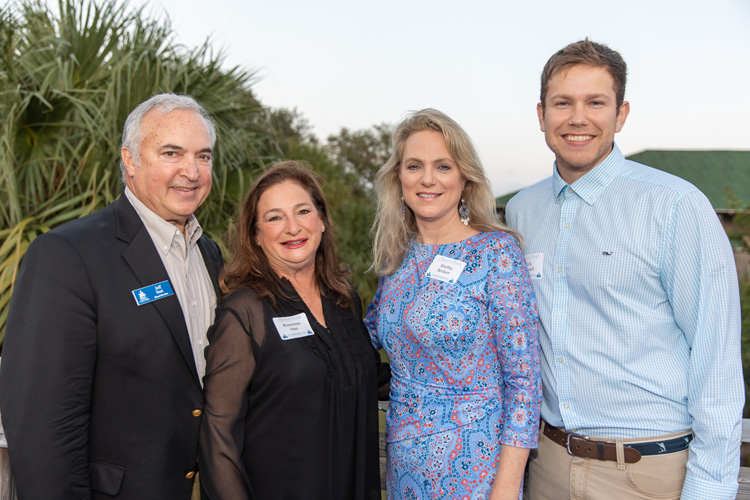A fiery sunset welcomed more than 150 guests as they arrived at the Environmental Learning Center last Saturday for an evening of Mangroves & Moonlight on the grounds of the 64-acre nature center.
Pockets of people milled about on the outdoor decks enjoying cocktails and hors d’oeuvres while listening to music by the band Third Stream, while inside others were enticed by auction items, silent gifting and door prizes. They wandered about learning of the board’s new Master Plan and viewed stunning photography from Clyde Butcher’s Living Waters Exhibit, on display through Feb. 28.
The more adventurous got their hands wet in the interactive Discovery Station, dipping into the 145-gallon Touch Tank, home to marine creatures such as hermit, horseshoe and spider crabs, sea cucumbers, brittle stars and sea urchins.
With a beautiful full moon rising, Mother Nature provided the perfect backdrop as the “evening under the stars” moved to a specially erected Moonlight Pavilion to dine on a buffet dinner catered by Wild Thyme Catering.
“I’ve always loved the ELC,” said Martha Redner, event chair with co-chairs Kat Redner and Bev Shea. “I don’t really get much outside time during the week. I love the environment; it’s my stress relief.”
A video screened after dinner illustrated how in 1988, a group of “environmentally conscious pioneers” had been dedicated to preservation and education. It described how “these trailblazers lived in our community and cherished the nature that thrived in and around the Indian River Lagoon.”
The ELC is located along the lagoon, the most bio-diverse estuary in North America and home to more than 4,300 species of plants and animals, including 36 rare and endangered species.
Don Barr, ELC board chairman, spoke of future plans to expand the campus with the construction of an education and event pavilion, in hopes of drawing 25,000 visitors to the campus annually.
“You’re going to be seeing and hearing a lot about the ELC in the next year,” said Barbara Schlitt-Ford, who began a position as interim director in April and was appointed as executive director in September.
A lot has already happened in the nine months since she came on board, including new programming, but there is more to come. “Keep your eyes on us in 2020, because there’s going to be a lot going on.”
Schlitt-Ford noted that such environmental issues as red tide and blue-green algal blooms are real concerns.
“It’s not somebody else’s backyard anymore. It’s ours,” she said. “We know that it’s time to do something. People are ready to hear about the causes and solutions. They are ready to step up and do their part, to be part of the solution.”
Aptly, as the ELC is situated between the bridges of the Wabasso Causeway, she added, “we like to be that bridge between the science community and the everyday general community. To help people understand what the issues are. What the causes are and what the solutions are.”
Reiterating that people are both the problem and the solution, she challenged everyone to be ambassadors for the environment.
“That is how we’re going to turn the tide on the environmental problems that we’re having. We’re not going to solve the issues that we have by operating in silos. It’s only by working together, sharing information and tackling these huge global issues together that we’re going to move the needle.”
Afterward, auctioneer John Moore rallied the crowd in a bidding war for an impressive collection of live-auction items and a paddle raise in hopes of garnering $100,000 to benefit ELC educational programming and operations.
For information, visit discoverelc.org.
Photos by: Denise Ritchie
Click HERE to see more or buy photos

